Struggling with inconsistent part quality or slow turnaround times from traditional methods? These issues can derail projects, inflate costs, and frustrate your team. CNC machining services offer a superior alternative for precision and efficiency, helping you avoid these headaches.
CNC machining services are better because they offer unmatched precision, repeatability, and speed. Computer control eliminates most human error, leading to higher quality parts, faster production, and the ability to create complex geometries that are difficult or impossible with manual methods. This means reliable outcomes for your critical components.
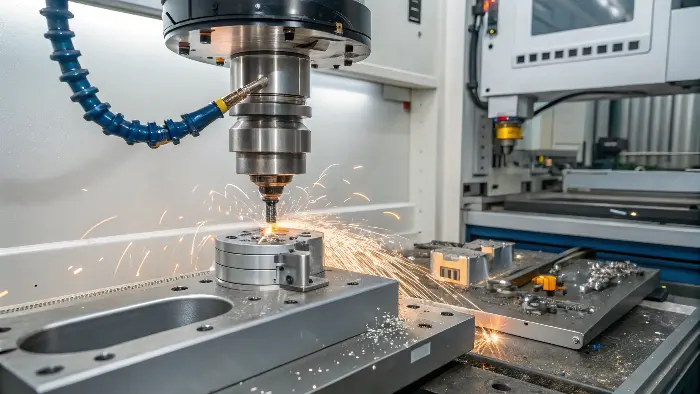
So, we’ve established that CNC machining brings significant benefits. But what exactly are these advantages, and why do engineers, in particular, find this technology so valuable? Let’s explore the specific ways CNC machining outshines older methods and why it’s become a go-to solution for modern manufacturing.
What are the key advantages of CNC machining?
Are you facing limitations with part complexity, material waste, or production speed? These challenges can hinder innovation and make it hard to meet market demands. CNC machining offers a powerful solution with numerous advantages that can directly address these problems.
The main advantages of CNC machining include high precision, excellent repeatability, increased production speed, and the ability to produce complex shapes. It also reduces labor costs for volume production, minimizes material waste, and enhances safety compared to manual operations. These benefits make it highly efficient.
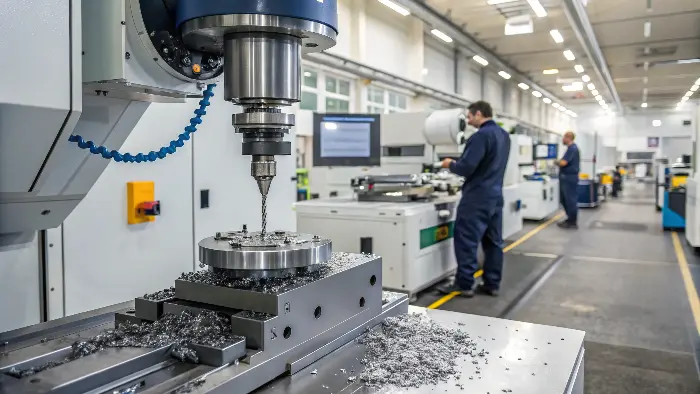
CNC machining truly shines when you look at its core benefits. The precision is a huge one. Because a computer controls the cutting tools, based on exact digital instructions from a CAD file, the level of accuracy is incredible. We’re talking about tolerances down to thousandths of an inch, or even finer, like ±0.01mm. I remember a client, an engineer much like Alex, who needed a set of interlocking parts for a specialized robotic gripper. The fit had to be absolutely perfect for the mechanism to function. With CNC machining, we at QuickCNCs delivered parts that assembled flawlessly on the first try. This kind of precision is very hard, if not impossible, to get consistently with manual machines.
Then there’s repeatability. Once a program is created and proven, a CNC machine can produce hundreds or even thousands of identical parts. Each one will be just like the last. This is vital for mass production and for ensuring that spare parts fit perfectly every time. Speed is another big plus. CNC machines can run continuously, 24/7 if needed, and often at much faster cutting speeds than a manual operator could sustain. They don’t get tired or need breaks in the same way. This means quicker turnaround times for your projects, from prototypes to full production runs. And because the process is highly automated, labor costs per part can be significantly lower, especially when producing larger quantities.
What are the benefits of CNC technology compared to traditional approaches?
Are old-school manufacturing methods holding back your designs and overall efficiency? Traditional approaches can often be slow, less accurate, and really struggle when it comes to complex designs. This can be a real bottleneck. CNC technology offers a clear upgrade in many critical areas.
Compared to traditional approaches, CNC technology offers superior accuracy, faster production cycles, and the ability to create highly complex geometries. It reduces reliance on manual skill for precision, leading to more consistent quality and lower chances of human error. This means better parts, faster.
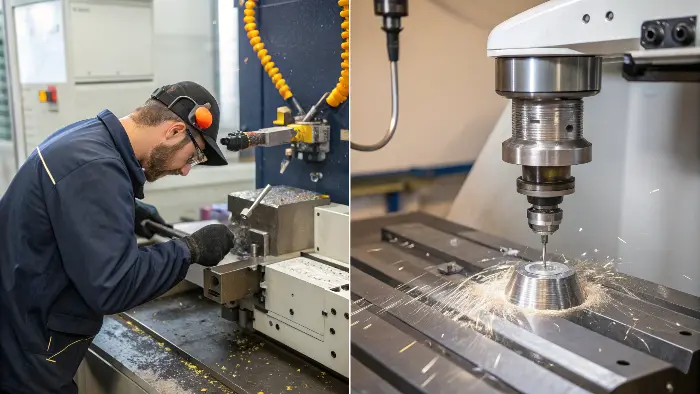
When we compare CNC technology to traditional methods like manual milling, manual lathing, or casting with extensive secondary operations, the differences are stark. Think about making a complex curve or an intricate internal cavity. Manually, this would require incredible skill from a machinist, a lot of time, and probably multiple machine setups, increasing the chance of error with each new setup. With CNC, the machine follows the programmed path smoothly and accurately, often in a single setup. This ability to handle complexity is a game-changer. I’ve worked on projects where engineers designed parts with flowing organic shapes or tightly packed internal features that would have been a nightmare, or simply impossible, to make manually. CNC machines, especially advanced 5-axis ones, can tackle these with relative ease.
Another key benefit is reduced material waste. CAM software, which generates the G-code for the CNC machine, can optimize toolpaths to use material more efficiently. While CNC is a subtractive process (meaning it removes material), the precision means less rework and fewer scrapped parts due to errors. The insight you mentioned about CNC eliminating human error for precision is spot on. Traditional methods often rely heavily on the operator’s skill and judgment for every single cut. If the operator has an off day, misreads a drawing, or if tools wear unevenly without notice, you can easily get a bad part. CNC removes much of this variability, leading to more predictable outcomes and better resource utilization. This consistency is something we at QuickCNCs pride ourselves on delivering to our clients worldwide.
What are the advantages of CNC over manual?
Relying on manual machining and facing inconsistencies, slow output, or high scrap rates? This can lead to frustrating project delays, higher defect rates, and real difficulty when you need to scale up production. CNC machining offers clear and compelling advantages over purely manual operations.
CNC machining’s advantages over manual methods are significant: higher precision, greater repeatability, faster production speeds, and the ability to create complex parts easily. It also improves safety by automating hazardous tasks and can operate for longer periods without operator fatigue, leading to more consistent output.
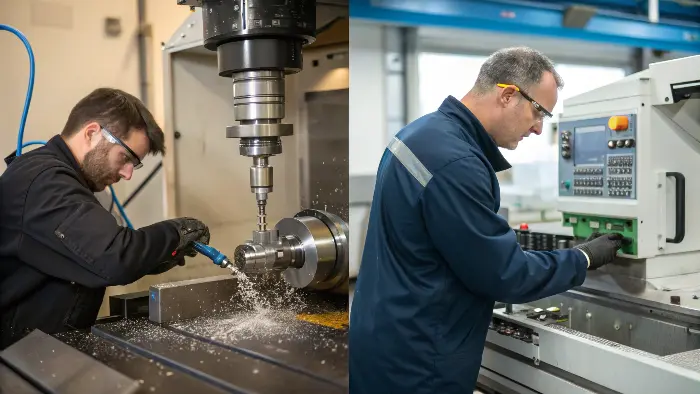
The shift from manual to CNC machining was a true revolution in manufacturing for very good reasons. Let’s break down the advantages further:
- Precision and Accuracy: Manual machining depends entirely on the operator’s skill, experience, and constant attention. Even the most skilled machinist can have slight variations from part to part. CNC machines, on the other hand, follow programmed instructions to very tight tolerances, consistently, part after part.
- Complexity: As I’ve mentioned, CNC can produce shapes and features that are extremely difficult, time-consuming, or even impossible for manual methods. Think of intricate patterns, undercuts, or multi-faceted components requiring precise angular relationships.
- Speed and Productivity: CNC machines can run at optimized speeds and feeds, often much faster than manual operations. Tool changes can be automated in machining centers, reducing downtime. This means more parts can be produced per hour, increasing overall throughput.
- Reduced Labor Costs (for volume): While the initial investment in CNC machinery is higher, for repeat jobs or higher production volumes, the reduced operator time per part leads to significant cost savings. One operator might even oversee multiple CNC machines.
- Safety: CNC machines often have enclosures that contain chips and coolant. The automated nature of the process reduces the operator’s direct exposure to moving cutting tools and other potential hazards.
I started my career in a shop that had both manual lathes and mills, alongside some early CNC machines. The difference was night and day. For a complex job on a manual mill, it could take hours of careful setup, measurement, and machining, with constant vigilance. The same job on a CNC, once programmed and set up, would run much faster, and the first part would be virtually identical to the hundredth. This reliability and efficiency are core strengths of CNC.
Why do engineers like CNC machining?
As an engineer, are you sometimes frustrated when your innovative designs are difficult or too costly to manufacture using older methods? Manufacturing limitations can force design compromises, stifling creativity and ultimate product performance. CNC machining empowers engineers to bring even their most complex visions to life.
Engineers like CNC machining because it offers design freedom, high precision for tight tolerances, and rapid prototyping capabilities. It allows them to create complex geometries and test designs quickly, knowing the manufactured part will accurately reflect their digital model. This significantly accelerates innovation.
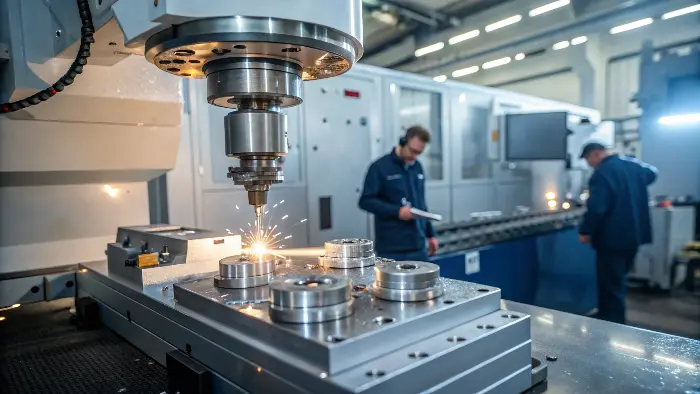
Engineers, like our example profile Alex from Germany who designs precision components for robotics, have very specific reasons to appreciate and specify CNC machining. It’s not just about making parts; it’s about enabling better engineering and faster product development.
One of the biggest reasons is design freedom. CNC technology can produce complex curves, intricate internal features, thin walls, and complex 3D contours that would be a significant challenge, or prohibitively expensive, for older manufacturing methods. This means engineers are not as constrained by "can it be made?" They can focus more on designing parts optimized for performance, weight reduction, or specific aesthetic requirements.
Precision and Tolerance Control is another huge factor. Engineers often work with very tight tolerances, especially in demanding fields like robotics, aerospace, medical devices, and precision instruments. CNC machining can reliably achieve these tolerances, often in the range of ±0.01mm (or about ±0.0004 inches) or even better, depending on the machine and process. This ensures that parts fit together correctly, assemblies function as intended, and performance specifications are met. I’ve worked with many engineers who specify CNC machining specifically because they need that guaranteed level of accuracy that only computer control can consistently provide.
Rapid Prototyping and Iteration Speed is also key. Engineers need to test their designs in the real world. CNC allows them to get physical prototypes made quickly and accurately directly from their CAD files. They can then test these prototypes, identify areas for improvement, make design changes, and get new iterations made quickly. This dramatically speeds up the development cycle. At QuickCNCs, we often help engineers like Alex get functional prototypes in their hands in just a few days. This ability to use the actual intended production material for prototypes, rather than a substitute material sometimes used in other rapid prototyping methods, is also a big plus for realistic testing.
Conclusion
CNC machining services are clearly better for many projects due to their outstanding precision, speed, and versatility. They empower engineers with greater design freedom, streamline production processes, and deliver high-quality parts consistently. For reliable and complex manufacturing, CNC is the superior choice, helping bring innovative designs to life effectively.


